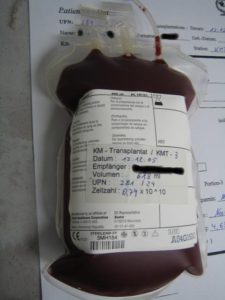
Recently Diagnosed or Relapsed? Stop Looking For a Miracle Cure, and Use Evidence-Based Therapies To Enhance Your Treatment and Prolong Your Remission
Multiple Myeloma an incurable disease, but I have spent the last 25 years in remission using a blend of conventional oncology and evidence-based nutrition, supplementation, and lifestyle therapies from peer-reviewed studies that your oncologist probably hasn't told you about.
Click the orange button to the right to learn more about what you can start doing today.
- You are here:
- Home »
- Blog »
- Multiple Myeloma »
- Multiple Myeloma Treatments- Stem Cell Transplant?
Multiple Myeloma Treatments- Stem Cell Transplant?

Do you have an opinion on stem cell transplant in the treatment of MM? My main concern is the high doses of chemo that are required prior to the transplant. Mary
Hi Mary,
Yes, I have definite opinions about autologous stem cell transplants (ASCT). But first, let me address your other issues.
- Curcumin,
- resveratrol and
- omega-3 fatty acids,
- MM Survivor
- MM Cancer Coach
- Director PeopleBeatingCancer
Recommended Reading:
Supportive Treatments for Patients with Multiple Myeloma
Intravenous immunoglobulin (IVIG)
“Patients with multiple myeloma often have low levels of the normal antibodies (immunoglobulins) needed to fight infection. This can lead to problems with lung and/or sinus infections that keep coming back. The level of antibodies in the patient’s blood can be tested, and if it’s low, antibodies from donors can be given into a vein (IV) to raise the levels and help prevent infections. The antibodies given are called IVIG or intravenous immunoglobulin. IVIG is often given once a month at first, but may be able to be given less often based on blood tests of antibody levels…”
Indication: What Pamisol is used for
Product Name: Pamisol
Indication: What Pamisol is used for
This medicine is used in the treatment of:
- Cancer of the bone that has spread from breast cancer or advanced multiple myeloma (a cancer of the bone marrow);
- High calcium levels in the blood due to cancer;
- Paget’s disease (a disease in which sections of bone break down excessively and are repaired incorrectly by the body).
Ask your doctor if you have any questions about why this medicine has been prescribed for you. Your doctor may have prescribed it for another reason.
This medicine is not addictive.
This medicine is available only with a doctor’s prescription.
There is not enough information to recommend the use of this medicine for children.
Action: How Pamisol works
This medicine belongs to a group of medicines called bisphosphonates.
It works by binding to bones and preventing them from being broken down excessively. This reduces the amount of calcium released into the blood. It can also reduce bone pain, prevent fractures (breaks) and reduce the need for radiation therapy of cancers that have spread to the bone.
Pamisol contains disodium pamidronate as the active ingredient. It also contains mannitol, phosphoric acid, and sodium hydroxide.
This medicine does not contain lactose, sucrose, gluten, tartrazine or any other azo dyes.”
What is Multiple Myeloma? Oncology has it backwards…
The most common MM symptoms are:
- Myelosuppression (Infection, pneumonia, etc,)
- Renal Insufficiency (kidney failure)
- Bone Disease (bone damage, fractures, leading to death)
- Heart Failure (heart damage leading to death)
- Blood Clots (DVT, hyper-viscosity)
The most common side effects/complications caused by MM therapies are:
- Myelosuppression (Infection, pneumonia, etc,)
- Renal Insufficiency (kidney failure)
- Bone Disease (bone damage, fractures, leading to death)
- Heart Failure (heart damage leading to death)
- Blood Clots (DVT, hyper-viscosity)
The most common causes of death for multiple myeloma survivors are:
- Myelosuppression (Infection, pneumonia, etc,)
- Renal Insufficiency (kidney failure)
- Bone Disease (bone damage, fractures, leading to death)
- Heart Failure (heart damage leading to death)
- Blood Clots (DVT, hyper-viscosity)


